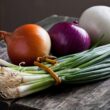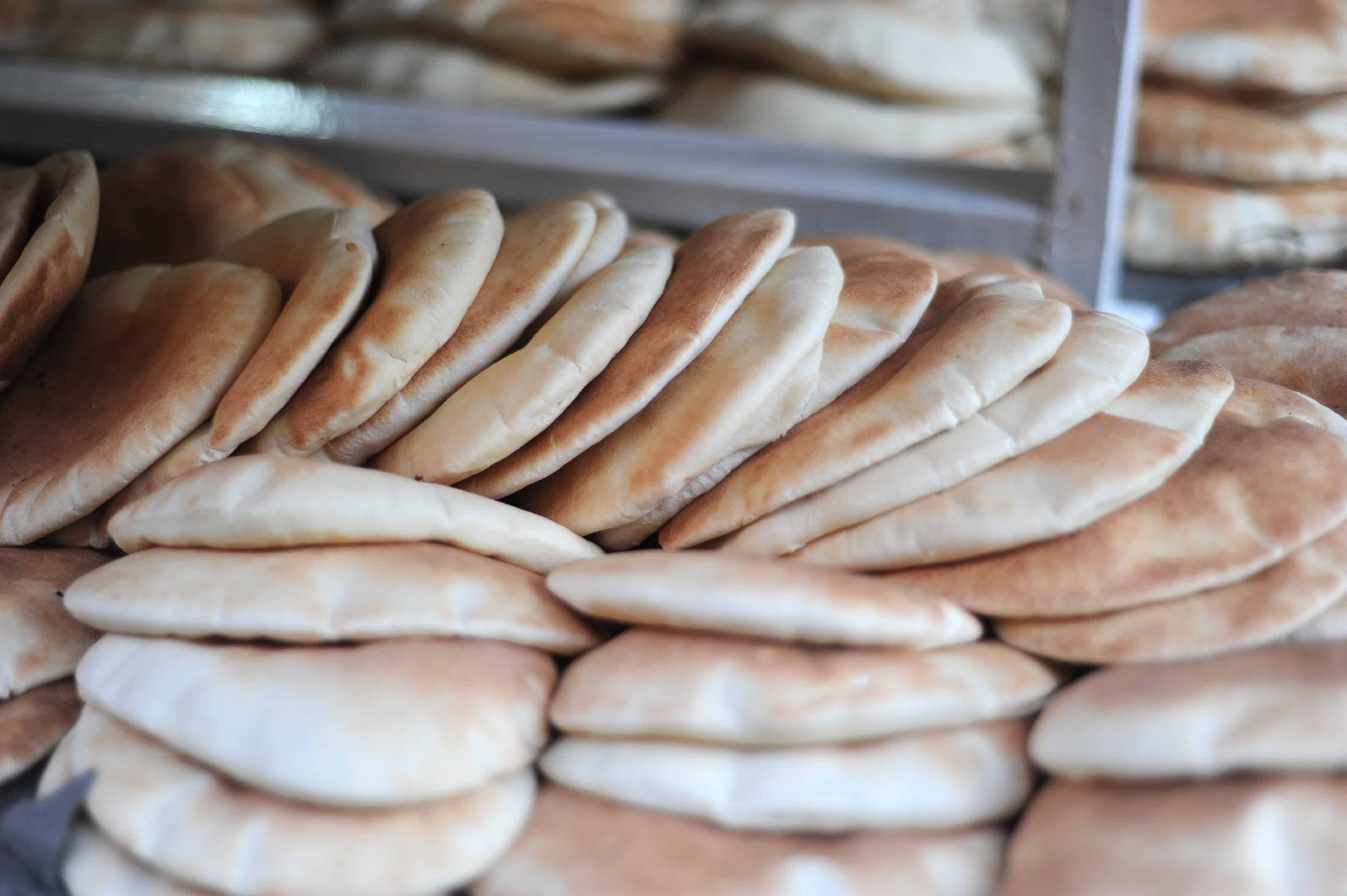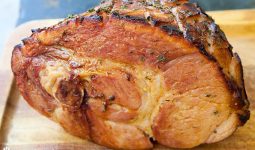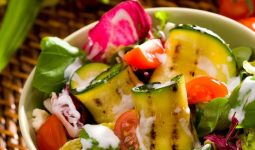Picture this: you’re walking through a bustling Damascus market at dawn, and the air fills with an irresistible aroma that makes your stomach growl instantly.
That’s the smell of fresh bread emerging from traditional ovens—a scent that’s been drawing people together for thousands of years. Syrian bread isn’t just food; it’s the foundation of every meal, the vessel for countless flavors, and a testament to one of the world’s oldest culinary traditions.
In Syria, bread carries profound cultural significance that extends far beyond mere sustenance. Each region has perfected its own variations, creating a diverse landscape of types of Syrian bread that reflects local ingredients, cooking methods, and family traditions passed down through generations.
From paper-thin sheets perfect for wrapping grilled meats to thick, chewy rounds that soak up rich stews, Syrian flatbreads offer something for every palate and purpose.
What makes Syrian bread culture truly fascinating is how these traditional recipes have remained largely unchanged for centuries, yet continue to evolve with modern tastes and techniques.
You’ll discover breads that range from everyday staples found at every corner bakery to special occasion varieties that mark important celebrations.
Ready to explore the wonderful world of Syrian bread? Let’s dive into the ten most beloved types that define this incredible culinary heritage.
Khubz Arabi
When most people think of Middle Eastern bread types, Khubz Arabi immediately comes to mind—and for good reason. This is the bread that appears on Syrian tables more than any other, earning its place as the undisputed champion of daily dining. The name literally translates to “Arabic bread,” but don’t let this simple designation fool you into thinking it’s ordinary.
What sets Khubz Arabi apart is its perfect balance of texture and functionality. The bread features a soft, pillowy interior with a slightly firmer exterior that creates the ideal pocket for stuffing with everything from falafel to grilled lamb. Traditional Syrian bakers achieve this distinctive texture through a combination of high-gluten flour, precise water ratios, and specific fermentation timing that can take up to 24 hours.
The magic happens in the oven, where temperatures reaching 500°F cause the dough to puff dramatically, creating that characteristic pocket. Syrian families often buy Khubz Arabi fresh twice daily—once in the morning and again before dinner—because nothing beats the taste and texture of bread that’s still warm from the oven. Many bakeries in Syria still use traditional wood-fired ovens, which impart a subtle smoky flavor that modern gas ovens simply can’t replicate.
Beyond its role as a vessel for other foods, Khubz Arabi serves as an edible utensil in Syrian culture. Diners tear off pieces to scoop up hummus, baba ganoush, or the juices from hearty stews. This practice, deeply rooted in Levantine dining traditions, transforms every meal into a communal experience where sharing bread literally means sharing life.
Markook (Shrak)
If Khubz Arabi is the sturdy workhorse of Syrian bread, then Markook—also known as Shrak—is the elegant artist. This traditional Syrian bread stretches so thin you can practically read through it, yet maintains enough strength to hold generous portions of grilled meats and vegetables without tearing.
The art of making Markook requires skills that take years to master. Syrian bakers stretch the dough by hand over a large, domed metal surface called a saj, which sits over an open flame. The process looks almost like a mesmerizing dance as the baker’s hands move in fluid motions, gradually expanding the dough into a perfect circle that can measure up to three feet in diameter. The entire cooking process takes less than two minutes, during which the bread develops distinctive leopard-like spots from direct contact with the hot metal.
What makes Markook particularly special is its versatility. When fresh and warm, it’s incredibly pliable and perfect for wrapping shawarma or creating quick roll-ups with cheese and herbs. As it cools, the bread becomes slightly crispier, making it excellent for breaking into pieces and using as a scoop for dips and spreads. Some Syrian families even save day-old Markook to toast lightly and serve alongside breakfast dishes.
The bread’s name comes from the Arabic word “markook,” meaning “beaten” or “hammered,” which refers to the thin, flattened appearance. In rural areas of Syria, families often gather to make large batches of Markook together, turning bread-making into a social event that strengthens community bonds while preserving traditional techniques.
Tannour Bread
Step into any traditional Syrian neighborhood, and you’ll likely encounter the distinctive dome-shaped clay ovens called tannour, where some of the most flavorful bread in the Middle East comes to life. Tannour bread represents one of the oldest baking methods still actively used today, producing loaves with a unique character that modern ovens struggle to replicate.
The tannour oven itself is a work of art—a beehive-shaped clay structure that retains heat for hours after the fire dies down. Bakers slap rounds of dough directly against the hot interior walls, where they stick and bake within minutes. This direct contact creates a bread with a beautifully charred exterior and a soft, chewy interior that’s infused with subtle smoky flavors from the wood fire.
What distinguishes tannour bread from other Syrian flatbreads is its irregular shape and rustic appearance. No two loaves look exactly alike, each bearing the unique marks of its brief encounter with the clay wall. The bread typically features a thicker profile than Markook or Khubz Arabi, with a more substantial bite that makes it perfect for dipping in olive oil or mopping up rich, sauce-heavy dishes.
Syrian families often have strong preferences for specific tannour bakeries, with some willing to travel across town for their favorite baker’s version. The bread’s shelf life is relatively short—best consumed within hours of baking—but this limitation only adds to its special status. Many Syrians consider tannour bread the ultimate comfort food, evoking memories of childhood visits to neighborhood bakeries where the warm, yeasty aroma promised something wonderful was always just minutes away.
Ka’ak
Among the types of Arabic flatbread, Ka’ak stands out as the perfect marriage of bread and pretzel, creating something uniquely Syrian that satisfies both hunger and craving for something special. This ring-shaped bread, generously coated with sesame seeds, represents the more indulgent side of Syrian baking—though it’s still considered everyday fare in most households.
The preparation of Ka’ak involves a slightly enriched dough that includes a touch of olive oil and sometimes a hint of sugar, giving it a richer flavor profile than simpler flatbreads. Syrian bakers shape the dough into rings of varying sizes, from small individual portions perfect for breakfast to large family-sized rounds that can feed several people. The generous coating of sesame seeds isn’t just decorative—it adds a nutty flavor and satisfying crunch that makes Ka’ak irresistible.
What makes Ka’ak particularly appealing is its versatility throughout the day. Syrians often enjoy it for breakfast, either plain or split and filled with cheese, za’atar, or olives. During afternoon tea time, it pairs beautifully with sweet preserves or simply dunked in strong, cardamom-scented tea. The bread’s sturdy texture also makes it excellent for sandwiches, holding up well to both wet and dry fillings.
Street vendors throughout Syria sell Ka’ak from large wicker baskets, and the sight of these golden, seed-covered rings piled high is enough to make any passerby stop for a purchase. The bread keeps well for several days when stored properly, though most families find their Ka’ak disappearing much faster than that due to its addictive quality.
Manakish (Man’oushe)
When Syrians want to start their day with something special, Manakish (also called Man’oushe) often tops the list. This isn’t just bread—it’s a complete breakfast experience that combines the best of Syrian baking with the country’s most beloved flavors. Think of it as the Middle Eastern answer to pizza, but with a history stretching back over a thousand years.
The foundation of Manakish is a soft, slightly chewy flatbread that’s specifically designed to complement its toppings rather than compete with them. The dough recipe varies from region to region, but the best versions achieve a perfect balance: sturdy enough to support generous toppings yet tender enough to bite through easily. Syrian bakers often add a touch of olive oil to the dough, which helps create the characteristic golden color and adds richness to the flavor.
Traditional toppings center around za’atar—a aromatic blend of dried herbs, sumac, and sesame seeds—mixed with olive oil to create a paste that’s spread across the dough before baking. The heat of the oven transforms this mixture into something magical, with the herbs becoming fragrant and the oil creating a slightly crispy surface that contrasts beautifully with the soft bread underneath.
Modern Syrian bakeries have expanded the topping options to include cheese (often a local white cheese similar to feta), ground meat with spices, or combinations of vegetables and herbs. However, purists argue that the classic za’atar version remains unmatched for its perfect balance of tangy, earthy, and herbal flavors. Many families have their own secret za’atar blends, passed down through generations and closely guarded like precious family heirlooms.
Tabboun
In the mountainous regions of Syria, where traditional stone ovens called tabboun still dot the landscape, a special type of bread emerges that captures the essence of rural Syrian baking. Tabboun bread represents the intersection of ancient technique and regional terroir, producing loaves that taste distinctly different from their urban counterparts.
The tabboun oven itself is a marvel of simple engineering—a stone-lined pit that’s heated with burning wood until the stones glow red-hot. Once the fire burns down to embers, bakers sweep out the coals and slide their bread directly onto the hot stone floor. This direct contact creates a bread with a uniquely crispy bottom crust and a tender, steamy interior that’s impossible to replicate with modern equipment.
What makes tabboun bread particularly special is how it reflects the local environment. Rural bakers often incorporate regional wheat varieties that have been grown in the same valleys for centuries, creating subtle flavor differences that true bread lovers can detect immediately. The bread typically features a more rustic appearance than city-made varieties, with irregular shapes and natural variations in color and texture.
Syrian families who have moved to urban areas often make special trips back to their ancestral villages specifically to buy tabboun bread, believing that no modern bakery can match the depth of flavor achieved through this ancient method. The bread’s keeping quality is excellent—the stone-baked crust helps preserve the interior moisture for days, making it practical for families who might bake large batches weekly rather than daily.
Smeed
Among the Levantine bread varieties, Smeed occupies a special place as the bridge between everyday sustenance and special occasion indulgence. This bread, made with semolina flour instead of regular wheat flour, offers a completely different texture and flavor profile that showcases the diversity possible within Syrian bread traditions.
The use of semolina—the coarse, golden flour typically associated with pasta-making—gives Smeed its distinctive characteristics. The bread develops a beautiful amber color during baking and maintains a slightly grainy texture that’s both rustic and refined. Syrian bakers often combine semolina with varying amounts of regular flour to achieve different textures, from completely smooth to pleasantly coarse.
What sets Smeed apart from other popular breads in Syria is its subtle nutty flavor and excellent keeping quality. The semolina flour contains more protein than regular wheat flour, which helps the bread maintain its structure and moisture over several days. This makes it particularly valuable for families who don’t have access to fresh bread daily or for special occasions where bread needs to be prepared in advance.
The preparation of Smeed often involves a longer fermentation process than other Syrian breads, allowing the semolina to fully hydrate and develop complex flavors. Some bakers add a touch of olive oil or yogurt to the dough, which enhances both the flavor and the keeping quality. The finished bread has a satisfying chew that makes it perfect for soaking up olive oil, pairing with strong cheeses, or simply enjoying with a drizzle of honey.
Lavash
While Lavash might be more commonly associated with Armenian cuisine, it holds an important place in Syrian bread culture, particularly in areas with significant Armenian populations. This paper-thin bread represents the ultimate expression of the baker’s skill, requiring techniques that transform simple ingredients into something almost magical.
The art of making authentic Lavash involves rolling the dough so thin that it becomes nearly transparent, then baking it quickly at high temperatures to create a bread that’s simultaneously crispy and flexible. Syrian bakers have adapted traditional Armenian techniques to local tastes, often creating versions that are slightly thicker and more pliable than their Armenian counterparts, making them better suited for wrapping and dipping.
What makes Syrian-style Lavash particularly interesting is how it bridges different culinary traditions within the country’s diverse population. In mixed neighborhoods, you might find Lavash being used to wrap traditional Syrian fillings like grilled lamb with parsley and onions, or being served alongside purely Arabic dishes like mutabal and tabbouleh. This culinary cross-pollination has created unique fusion dishes that exist nowhere else in the world.
The bread’s incredible thinness gives it a unique texture that’s almost like edible paper when fresh, becoming delightfully crispy when toasted. Many Syrian families use Lavash as a base for quick appetizers, brushing it with olive oil and za’atar before toasting it briefly to create an instant snack that’s both satisfying and sophisticated.
Samoon
In Syria’s urban centers, particularly in Damascus and Aleppo, Samoon has become the bread of choice for those seeking something between traditional flatbreads and European-style loaves. This elongated, slightly crusty bread represents the evolution of Syrian baking as it incorporates influences from Ottoman and French baking traditions while maintaining distinctly Middle Eastern characteristics.
The shape of Samoon is immediately recognizable—oval and slightly flattened, with shallow scores across the top that help it bake evenly and create an attractive presentation. The dough typically contains a higher proportion of water than traditional flatbreads, which creates a more open crumb structure and a lighter texture. Syrian bakers often add a touch of olive oil to the dough, which helps create the characteristic golden crust and adds richness to the flavor.
What makes Samoon particularly popular in Syrian food culture is its versatility for both traditional and modern eating styles. It’s substantial enough to make excellent sandwiches—particularly popular with Syria’s growing urban population—yet still works beautifully for traditional dipping and scooping. The bread’s structure holds up well to both wet and dry fillings, making it perfect for everything from simple cheese and tomato combinations to elaborate meat and vegetable preparations.
The baking process for Samoon often involves creating steam in the oven during the initial stages, which helps develop the characteristic crust while keeping the interior soft and moist. This technique, borrowed from European baking traditions, has been adapted to work with traditional Syrian ovens and local ingredients, creating something uniquely Syrian despite its international influences.
Qurban
Among the regional bread varieties Syria offers, Qurban holds a special place as the bread of celebration and sacrifice. This traditional bread, whose name derives from the Arabic word for “offering,” is deeply intertwined with religious and cultural ceremonies, making it far more than just another type of flatbread.
The preparation of Qurban involves specific rituals and ingredients that vary by region but always emphasize purity and intention. The dough typically includes the finest available flour, pure water, and sometimes a touch of olive oil or milk. What sets it apart from everyday breads is not just the ingredients but the care and attention given to every step of the process. Many families believe that the bread must be made with positive intentions and prayers to properly serve its ceremonial purpose.
The shape and size of Qurban can vary dramatically depending on the occasion and regional traditions. For religious holidays, it might be formed into large, round loaves that can feed extended families gathering for celebration. For personal offerings or smaller ceremonies, individual-sized portions are more common. Some regions create elaborate decorative patterns on the surface, while others prefer the simple, rustic appearance that emphasizes the bread’s humble origins.
What makes Qurban particularly meaningful in Syrian culture is how it connects food preparation with spiritual practice. The act of making this bread becomes a form of meditation and prayer, with families often gathering to participate in the process together. The sharing of Qurban bread strengthens community bonds and reinforces the cultural values that define Syrian hospitality and generosity.
Syrian bread culture represents far more than just different ways to prepare flour and water—it embodies thousands of years of culinary evolution, cultural exchange, and family tradition. Each type of bread tells a story about the people who created it, the region where it originated, and the meals it was designed to complement.
From the everyday reliability of Khubz Arabi to the ceremonial significance of Qurban, these breads form the foundation of Syrian cuisine and culture. They’ve survived wars, migrations, and changing times by adapting while maintaining their essential character. Today, Syrian bakers around the world continue to make these traditional breads, keeping alive not just recipes but the cultural memories and practices they represent.
Whether you’re exploring Syrian cuisine for the first time or deepening your appreciation for Middle Eastern food culture, understanding these bread varieties opens a window into a rich culinary tradition that continues to evolve while honoring its ancient roots. The next time you bite into a piece of Syrian bread, remember that you’re participating in a tradition that connects you to countless generations of bakers, families, and communities who have found joy, sustenance, and meaning in these simple yet profound creations.








